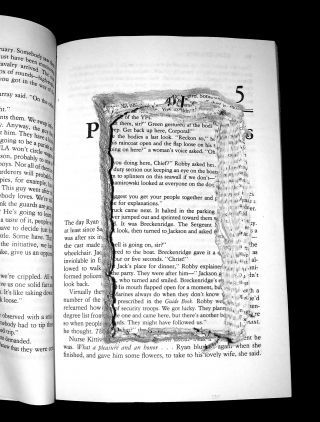Relationships
Eavesdropping on Famous Writers
Conversations with four famous writers offer insight and inspiration.
Posted December 12, 2014

Books about famed writers, or collections of conversations with them, are always seductive to writers. How open will this famous person be? What heretofore hidden thoughts or behaviors are going to be revealed?
What follows are a few creative insights from a roundup of four books consisting of conversations, letters, and a biography. The famous subject of each is someone you may think you already know from reading their creative work, but read on.
Conversations with Steve Martin, edited by Robert E. Kapsis (The University Press of Mississippi):
The following excerpt is from the chapter “The Pleasure of His Company: The Writing World of Steve Martin” by Jeff Zaleski, first published in The Publishers Weekly:
Martin professes to love the process of writing [writes Zaleski]. “I don’t want to use a sexual metaphor,” he says, “but it’s something that builds up, builds up, builds up and then it all comes out.” His face collapses into a crinkled grin. “The other thing is that I just love sentences, and I love shaping paragraphs. It’s a love of the ring and the rhythm and the sound of words.”
Martin’s novellas are composed with a jeweler’s eye, his language exact and spare. His drive for exactitude results in a book that, as he puts it, is “usually a little short. I have a show-biz instinct. Once in high school I did a show and I knew I went on too long, because people left. That is still in my head.”
“How much rewriting do you do? And when do you write?”
“I usually write in the afternoon on my computer. Sit on the bed. I take care of all of the phone calls, I don’t block out anything. Sometimes during a movie I can write, because there’s a lot of time. Then I send it out to a few friends and get some feedback, and then I start—‘rewriting’ is the wrong word because really it’s honing. I read it over and over and over and over, and then I start reading it aloud, to myself sometimes, or to my dog. I find that when you’ve read it out aloud you start to catch things that you wouldn’t catch by reading it silently.
Conversations with Edna O’Brien, edited by Alice Hughes Kersnowski (The University Press of Mississippi):
The following is from an interview by Shusha Guppy in 1984, first published in The Paris Review:
INTERVIEWER: When you start a play, or a novel, or a short story, do you have a basic idea? Or a sentence? Something that triggers off the process of creating the work?
O’BRIEN: I always have the first line. Even with my very first book, The Country Girls, I went around with this first sentence in my head long before I sat down to write it.
INTERVIEWER: Once you have started, do you have the whole scheme in your mind or do characters and plot take their own course and lead you, as some novelists say they do?
O’BRIEN: I know more or less, but I don’t discuss it with myself. It is like sleepwalking; I don’t know exactly where I am going but I know I will get there. When I am writing, I am so glad to be doing it that whatever form it takes--play, novel, et cetera--I am thankful to the Fates. I keep dozens of pens by me, and exercise books.
Italo Calvino: Letters, 1941-1985, Selected and with an Introduction by Michael Wood, translated by Martin McLaughlin (Princeton University Press):
In a letter to one of his critics, Calvino explained how to view his work:
In every piece I write, I believe, one can see parts that are more written and parts that are less written, the former where the commitment to writing is at its maximum and the latter which are like bits that have been merely drawn beside bits that are painted. ...
The written page is not a uniform surface like a piece of plastic; it is more like the cross-section of a piece of wood, in which you can see how the lines of the fibers run, where they form a knot, where a branch goes off.
Now in these more written parts there are some I call written very small because when writing them it happens that (I write with a pen) my handwriting becomes very small, with o’s and a’s that have no hole in the middle, and are reduced to tiny points; and there are others that I call written big because here instead my handwriting becomes broader, with o’s and a’s where you could put your finger in the loop.
These parts written very small I would say are those where I tend toward a verbal density, toward the minutely descriptive. For instance, the description of the cloud of smog (I racconti, p. 547) or the window in the boss’s office (p. 552) or the gala evening that turns into an image of destruction (p. 560), or the brasserie that contrasts with the mist outside (p. 544). . . .
The parts written big on the other hand are those which tend toward verbal rarefaction. For instance, very brief landscapes, almost lines of verse: “Era autunno; qualche albero era d’oro” (It was autumn; some of the trees were golden.)
It’s All a Kind of Magic: The Young Ken Kesey, by Rick Dodgson (The University of Wisconsin Press):
After the huge success of his first novel, One Flew Over the Cuckoo’s Nest, Ken Kesey was working on a rough draft of his second novel. He showed it to his friend Ed McClanahan, who loved it, but
he had one burning question: whose amputated arm was hanging over the river in the opening scene? Kesey’s answer was typically quixotic: “Shit, I don’t know whose arm it is,” he told his friend. “[T]hat’s what I’m writing the book for, to find out.”
McClanahan was amazed by this impulsive, unstructured approach to writing. “I think it’s true,” he insisted years later. “[H]e really didn’t know what he was writing about until he wrote.”
Copyright (c) 2014 by Susan K. Perry, author of Kylie’s Heel


